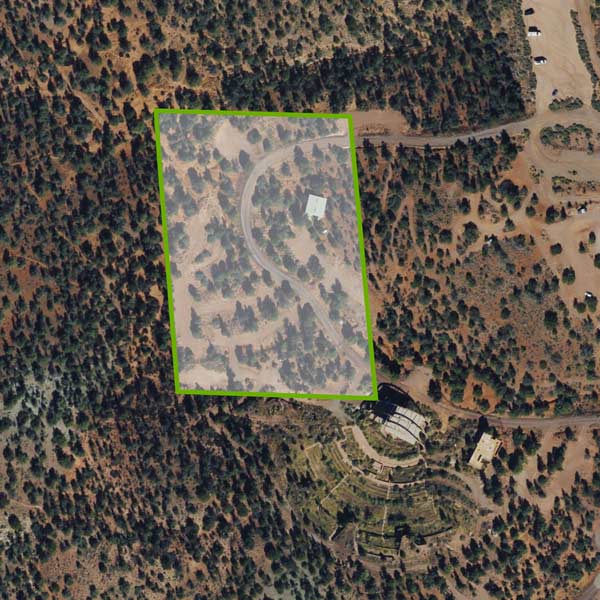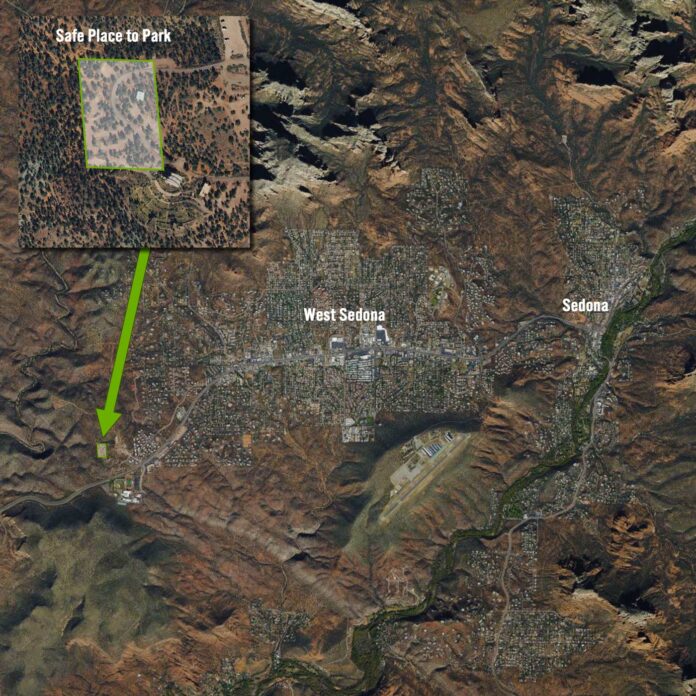The newly introduced “Safe Place to Park” program has ignited a spirited debate in the picturesque city of Sedona. This initiative, designed to provide a temporary overnight parking area for people experiencing homelessness who live in their vehicles, is set against the serene backdrop of Sedona’s Cultural Park. The program has drawn both support and concern, sparking a broader conversation about solutions for people without stable housing. This article addresses the criticisms noted in a recent oppositional piece, advocating for a response rooted in empathy, evidence, and forward-thinking strategies.
I. Introduction
The “Safe Place to Park” initiative symbolizes Sedona’s commitment to addressing the needs of people experiencing homelessness with dignity and respect. Born from necessity in a community renowned for its natural beauty and spirit of compassion, this program challenges us to confront and correct misconceptions while underscoring the importance of such initiatives.
II. Learning from Past Failures
Critics often cite previous failures in aiding people experiencing homelessness to predict the futility of new initiatives. However, this view neglects the essential nature of progress, which involves learning from past mistakes and evolving. Nationally, successful programs providing a spectrum of services to this population demonstrate what can be achieved. Sedona’s initiative offers a chance to apply these best practices and innovate, improving upon earlier efforts.
III. Addressing Concerns About the Chosen Organization
The Verde Valley Homeless Coalition’s selection to administer the program has faced scrutiny due to past issues. Yet, it is essential to recognize the reforms implemented to ensure accountability. Post-controversy, the Coalition has seen significant leadership changes and stricter oversight, demonstrating a renewed commitment to serving effectively and transparently.
IV. Program Effectiveness and Fairness
Some detractors question the program’s temporary nature and fluid admission criteria, fearing ineffective or unfair administration. However, “Safe Place to Park” serves as a critical transitional solution, acknowledging and addressing immediate needs while paving the way for more permanent solutions. Successful similar initiatives in other cities have not only provided immediate relief but also facilitated long-term housing solutions.
V. Transparent Decision-Making
The program’s implementation resulted from extensive community engagement, including public forums, surveys, and direct outreach. Achieving unanimous agreement on public issues is challenging, yet the city’s process has been markedly transparent and inclusive. Public support, while varied, indicates a substantial community interest in proactive solutions for people experiencing homelessness.
VI. The Economics of Subsidizing Homelessness

The critique that offering free parking to people experiencing homelessness misuses public funds overlooks the broader benefits. When evaluated for cost-effectiveness and social responsibility, providing safe parking emerges as both a practical and humane strategy. The costs of inaction—both human and economic—are considerably higher than the program’s expenses. Moreover, such initiatives align with a moral imperative to ensure basic necessities for all community members.
VII. Mitigating Impact on Cultural Park
Concerns about the program’s impact on the Cultural Park’s aesthetics are valid but addressed through strict operational guidelines designed to minimize its footprint. The argument that supporting people experiencing homelessness detracts from the area’s natural beauty fails to recognize the potential for compassion and conservation to coexist. Helping those in need enhances rather than diminishes the value of communal spaces, broadening our understanding of community.
VIII. Conclusion
Sedona’s “Safe Place to Park” program is more than a temporary fix; it is a declaration of the community’s values and its resolve to tackle complex social issues with innovative and compassionate solutions. While the critiques are based on legitimate concerns, they often miss the broader significance of the program as part of a comprehensive approach to addressing the needs of people experiencing homelessness.
By embracing and refining initiatives like “Safe Place to Park,” Sedona can lead the way in addressing the challenges faced by people without stable housing with dignity, proving that innovation and compassion can indeed transform lives and communities.
Council votes 6-1 to OK car camp for homeless workers – Sedona Red Rock News
Sedona moving forward with plan to allow homeless area workers a safe place to park 10 | KJZZ



